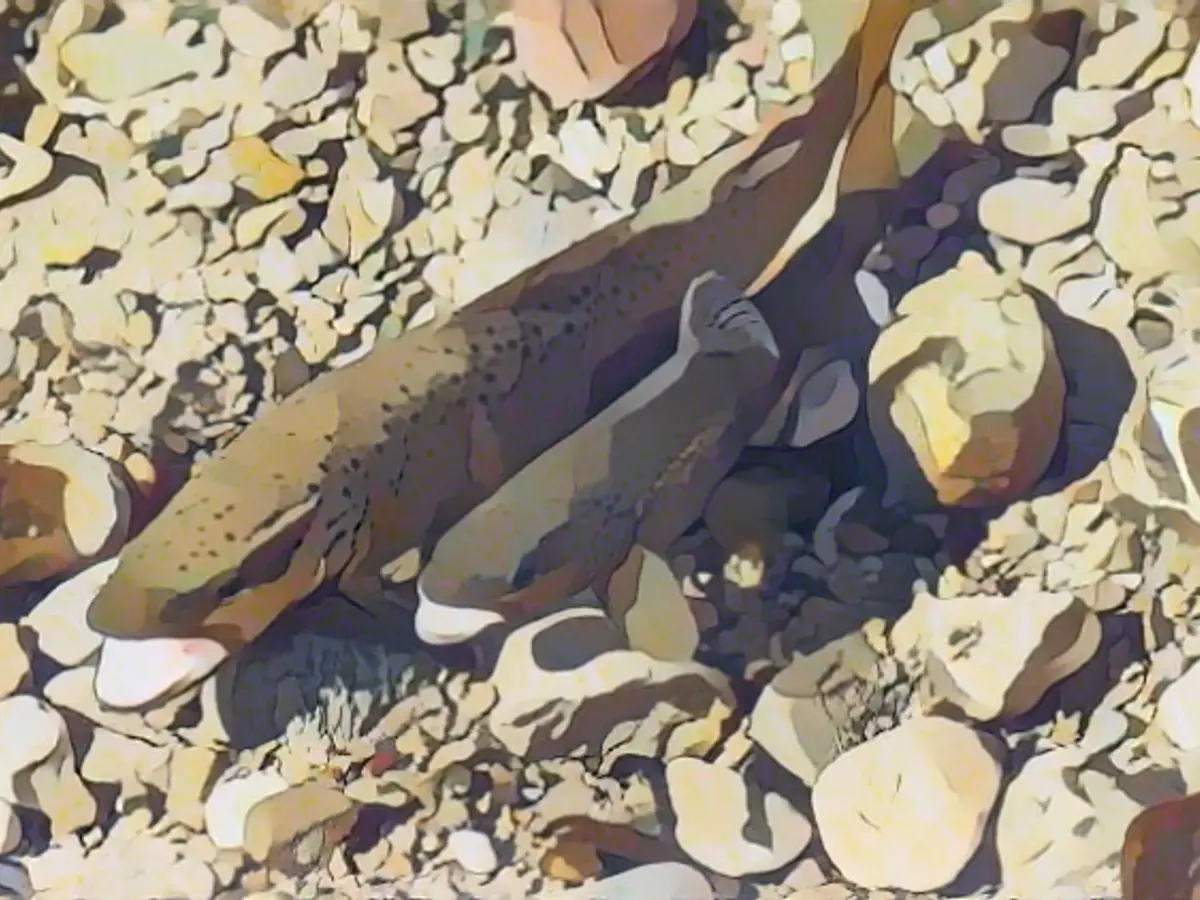Trout classified as "endangered" for the first time
The majority of sturgeon species are already threatened with extinction in this country, and now trout are also considered an endangered species. This is according to the latest Red List from the Leibniz Institute of Freshwater Ecology and Inland Fisheries. Overall, the institute's assessment of native freshwater fish is grim.
The trout is considered an endangered fish in Germany for the first time. This is according to the new Red List for freshwater fish and lampreys in Germany, which was recently published. The Leibniz Institute of Freshwater Ecology and Inland Fisheries (IGB) in Berlin, which presented the list, reported that a total of 21 species had been upgraded to an endangered category. This means that more than half of the native species are now considered "endangered" or already "extinct". The list has been updated for the first time since 2009. Lampreys are fish-like, phylogenetically very old vertebrates.
The trout (Salmo trutta) was upgraded from "not endangered" to "endangered". According to the IGB, the population is estimated to be declining in five federal states - including Bavaria and Baden-Württemberg, where there were once large populations. With around 10 percent of freshwater fish and lamprey species extinct, Germany is well above the European average of 2.5 percent, according to the IGB. The causes include the loss of habitats due to river engineering and pollution as well as climate change, said IGB research group leader Christian Wolter, one of the main authors of the Red List.
According to IGB, many places lack so-called oxbow lakes and shallowly flooded floodplains where fish fry can develop undisturbed. Weirs and dams that interrupt fish migration routes are also a cause of the decline of many species. Added to this are the effects of climate change, such as higher water temperatures and less oxygen in the water.
The list now classifies 38 species as "endangered", compared to 22 species in 2009. "We have seen a very clear deterioration in the endangered status of native freshwater fish and lampreys over the last fourteen years," says Wolter. More than half of the species are endangered or extinct. According to the report, 52 percent of species are currently classified as "endangered" or already "extinct or lost". That is 47 of the 90 established native species. Only 36 percent are considered "not endangered".
Sturgeons also particularly endangered
The remaining species are "extremely rare", are on the early warning list or cannot be classified due to a lack of data. "For most freshwater fish and lampreys, the main causes of endangerment and suitable aid and protection measures have been known for a long time," said Wolter. "A major problem is that, as a society, other functions are often more important to us, especially for watercourses: Flood protection, navigation, drainage, wastewater discharge, power generation, water extraction, heat discharge count more here than ecological criteria."
Sturgeons are also considered to be particularly endangered: seven of the eight sturgeon species found in Europe are "threatened with extinction" throughout Europe, while the eighth is now considered "critically endangered", writes the IGB. The Atlantic salmon (Salmo salar) is also still threatened with extinction in Germany despite reintroductions. "The passability of rivers for migratory fish such as the Atlantic salmon must be further improved, if only to mitigate the threat posed to this cold-loving species by climate change," said Wolter.
Read also:
- This will change in December
- Fireworks and parties ring in 2024 - turn of the year overshadowed by conflicts
- Attacks on ships in the Red Sea: shipping companies avoid important trade route
- Expected costs of flood aid trigger new debate on debt brake
The decline of trout populations in several German states, including Bavaria and Baden-Württemberg, has led to it being classified as an endangered fish. This is highlighted in the latest Red List for freshwater fish and lampreys in Germany.
Furthermore, education about the importance of preserving native freshwater species, including trout and sturgeons, could help raise awareness and encourage action to protect these endangered animals. For instance, teaching children about the role of oxbow lakes and floodplains in fish development, or discussing the impact of climate change on aquatic life, could foster a stronger connection with these animals and their habitats.
Source: www.ntv.de







